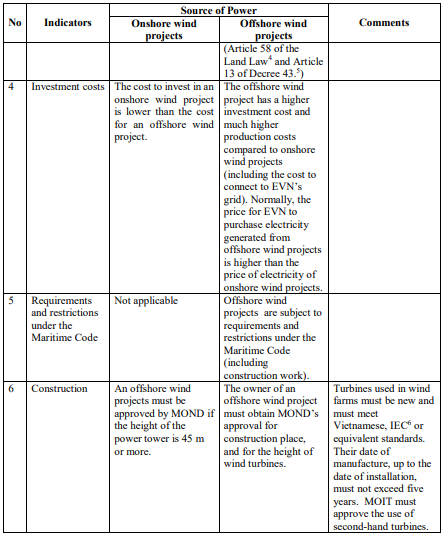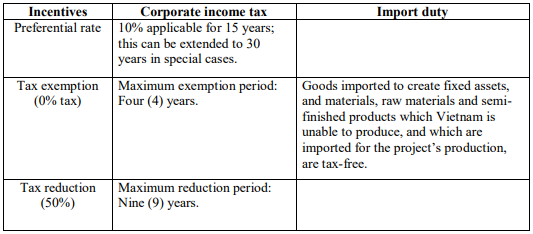Vietnam’s policy on Offshore Wind Projects
Vietnam has a long coastline and great potential to generate energy from offshore wind. This is especially true in the South, South Central and Mekong Delta regions. But serious interest in the development of offshore wind power has only recently begun. The industry holds great promise. This Article sets out Vietnam’s current policy and its plan to develop offshore wind power.
Overview. We start with Decision 391 that provides the encouragement to develop offshore wind projects. It provides general policies to develop offshore wind projects (including favorable conditions and incentives). Now, both local and foreign investors are able to develop offshore wind projects. About 36 GW have been registered for development, but no development plan has been approved. The targets are mainly situated in Binh Dinh, Phu Yen, Khanh Hoa, Ninh Thuan, Binh Thuan, Ba Ria–Vung Tau, Ben Tre, and Bac Lieu provinces where wind speed is constant. The Ministry of Trade and Industry (“MOIT”) expects that the industry will generate 2-3 GW per year from offshore wind in 2030, and that the output could reach 21 GW in 2045. This plan is ambitious, but it seems to be feasible given that (i) large increases in the demand for power result in a rapid expansion of capacity; (ii) Vietnam’s traditional power generation is limited; (iii) renewable energy (including offshore wind power) is an important segment of power generation in the approved national energy plan under Resolution 552 ; (iv) cost of wind power has dropped substantially over the last ten years and will continue to drop; and (v) technologies for wind turbines and foundations have been rapidly enhanced by developed countries and by emerging markets. This helps developers to resolve technical issues and reduce investment costs.
Offshore Wind Vs Onshore Wind. Conditions, electricity price, restrictions and regulatory procedures that apply to an offshore wind project are different from those that apply onshore. The concept of an “offshore wind power project”, as defined in Decision 39, means any grid-connected wind power project with wind turbines constructed and operated offshore - outside the lowest mean high water as [measured over] 18.6 years; and the concept of an “onshore wind power project” means any grid-connected wind power project with wind turbines constructed and operated in mainland and coastal areas of which the outer boundary is the lowest mean high water as [measured over] 18.6 years. In practice, it is hard to know whether a wind project is an onshore or offshore project due to lack of sufficient information and data to measure high and low water mean. The matter can be consulted with the Ministry of Natural Resources and Environment.
The table below compares key characteristics and indicators of each source of power:


Investment Incentives. Offshore wind projects are especially encouraged by the Government. They are entitled to exemption/reduction of rental of sea surface. They can also qualify for favorable state loans and tax incentives. Below are tax incentives applicable to offshore wind projects:

Conclusion. Vietnam’s plan to develop offshore wind projects is an effort to support and promote the global program to reduce CO2 emission. The plan is also aimed at achieving the country’s power mix plan. Development of offshore wind projects is in its early stages. The industry can develop commercially in the next ten years as cost reductions are achieved. The investment in offshore wind projects will become more attractive and feasible in 2045 once coal-fired plants must be closed and further reduction of investment costs can be achieved. There are many factors for the industry to become an important part of Vietnam’s future power mix. Achievement of this target requires the Government support/attention. To begin with, the Government should apply the favorable tariff to offshore wind projects until the young industry is ready to compete with other sources of power generation. Of course, the Government’s guarantees and subsidies are welcome by the private sector. In return, Vietnam will have a sustainable source of clean and green power, and Vietnam can reaffirm its national interest in the ocean areas where offshore wind projects are constructed.






